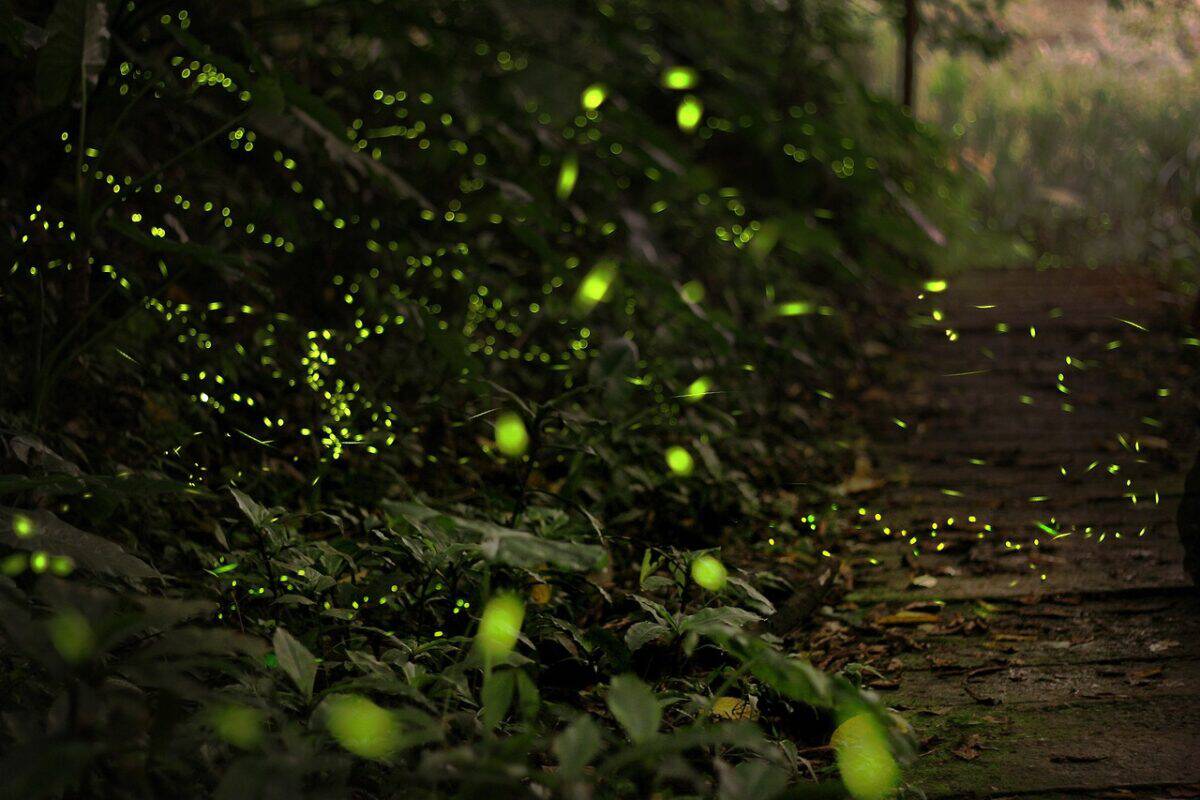Fireflies, with their enchanting glow, have long captured the imaginations of nature lovers and scientists alike. Recently, a fascinating natural wonder—the largest swarm of fireflies in half a century—illuminated parts of the U.S., evoking both a sense of wonder and curiosity. This rare phenomenon offers a mesmerizing glimpse into the remarkable life cycle and ecological significance of these bioluminescent marvels. Join us as we explore this breath-taking event and delve into what it means for fireflies and their habitats.
Understanding the Luminous Phenomenon

The spectacle of fireflies lighting up the night is one of nature’s most delightful displays. Known scientifically as bioluminescence, this ability to emit light is a result of a chemical reaction within the firefly’s body. Specialized cells produce light by combining a substance called luciferin with oxygen, catalyzed by the enzyme luciferase. This cold light serves various roles, primarily in mating and predator deterrence.
The Record-Breaking Swarm Explained

This summer, regions across the eastern U.S., from the Appalachian foothills to parts of the Midwest, witnessed the largest congregation of fireflies in 50 years. While the phenomenon was localized, it was notably concentrated in forests where conditions for fireflies were optimal. Weather conditions, including a wet spring and mild summer temperatures, provided ideal circumstances for these insects to thrive in unprecedented numbers.
The Role of Fireflies in Ecosystems

Fireflies are more than just a pretty sight; they play a crucial role in ecosystems as indicators of environmental health. Their presence typically signifies a healthy habitat with clean air and water. Various species contribute differently to their ecosystem, from acting as food for other animals to controlling pest populations. Their larvae, commonly referred to as glow-worms, are voracious predators of soft-bodied invertebrates, like snails and slugs.
Firefly Biology and Behavior

Fireflies belong to the Lampyridae family, encompassing around 2,000 species worldwide. They undergo complete metamorphosis, with life stages including egg, larva, pupa, and adult. While most adults can emit light, it’s in the larval stage that many fireflies produce the most consistent glow. Each species has a unique pattern of flashes, with males and females engaging in this luminous communication for mating purposes.
Factors Contributing to the Swarm

Recent climatic changes have largely contributed to the increased firefly population this year. Adequate rainfall and high soil moisture are essential for the survival of firefly larvae. Additionally, conservation efforts to preserve natural habitats and reduce light pollution have also played a significant role in bolstering their numbers.
Conservation Efforts and Challenges

Despite their remarkable display, fireflies face significant threats from habitat destruction, pesticide use, and light pollution. Conservationists stress the importance of maintaining dark, natural environments and reducing chemical pollutants to preserve these enchanting insects. Programs promoting sustainable agricultural practices and habitat restoration are vital to ensure the survival of fireflies for future generations.
The Impact of Light Pollution

Artificial lights from urban areas can disorient fireflies, disrupting their natural behaviors and mating rituals. By reducing unnecessary lighting and using fixtures that minimize light spillover, communities can help create friendlier environments for fireflies. Efforts to implement dark-sky initiatives are crucial in supporting the continuation of firefly populations.
The Public’s Fascination with Fireflies

The recent swarm has captured the public imagination, drawing attention to the wonders of these glowing insects. Communities have organized night-time events, encouraging people to switch off their lights and enjoy the fireflies’ spectacular flashes. These gatherings foster greater awareness and appreciation for environmental conservation efforts.
Scientific Discoveries and Contributions

Research into fireflies has provided insights into various scientific fields, including biochemistry, environmental science, and genetics. Studies of bioluminescence have paved the way for advancements in medical imaging and forensic science, demonstrating the broad relevance of fireflies beyond their ecological niche.
The Cultural Significance of Fireflies

Fireflies hold cultural importance in many societies, often symbolizing life’s fleeting beauty and mystery. In folklore and literature, they are seen as magical creatures guiding travelers and embodying hope. Their presence in art and media continues to inspire people across generations, linking them to themes of wonder and conservation.
Ways to Support Firefly Conservation

Individuals can contribute to firefly conservation by creating firefly-friendly habitats, reducing pesticide use, and participating in community science projects. Building awareness through education and advocacy can also help push for policies that protect firefly populations. By taking small, meaningful steps, everyone can play a part in preserving these splendid creatures.
The Future of Fireflies in the U.S.

As climate conditions and human impacts continue to evolve, the future of fireflies in the U.S. is uncertain. Yet, the recent unprecedented swarm underscores the resilience of these insects. Through concerted conservation efforts, scientific research, and public awareness, there is hope that the firefly’s glow will remain a summer staple, enchanting future generations.
In conclusion, fireflies offer more than just a magical nighttime display; they are invaluable components of their ecosystems and signal the health of natural environments. The largest firefly swarm seen in 50 years highlights both the awe-inspiring wonder of nature and the urgent need for conservation efforts. By understanding, appreciating, and protecting these luminous insects, we can ensure that their enchanting glow continues to light up our nights and our imaginations.
- The Sad Reason Polar Bears Are Struggling to Find Food - July 2, 2025
- How Adorable Is It That Monkeys Use Leaves as Toys? - July 2, 2025
- Coral Reefs of the Florida Keys: What’s Left and What’s Next - July 2, 2025

